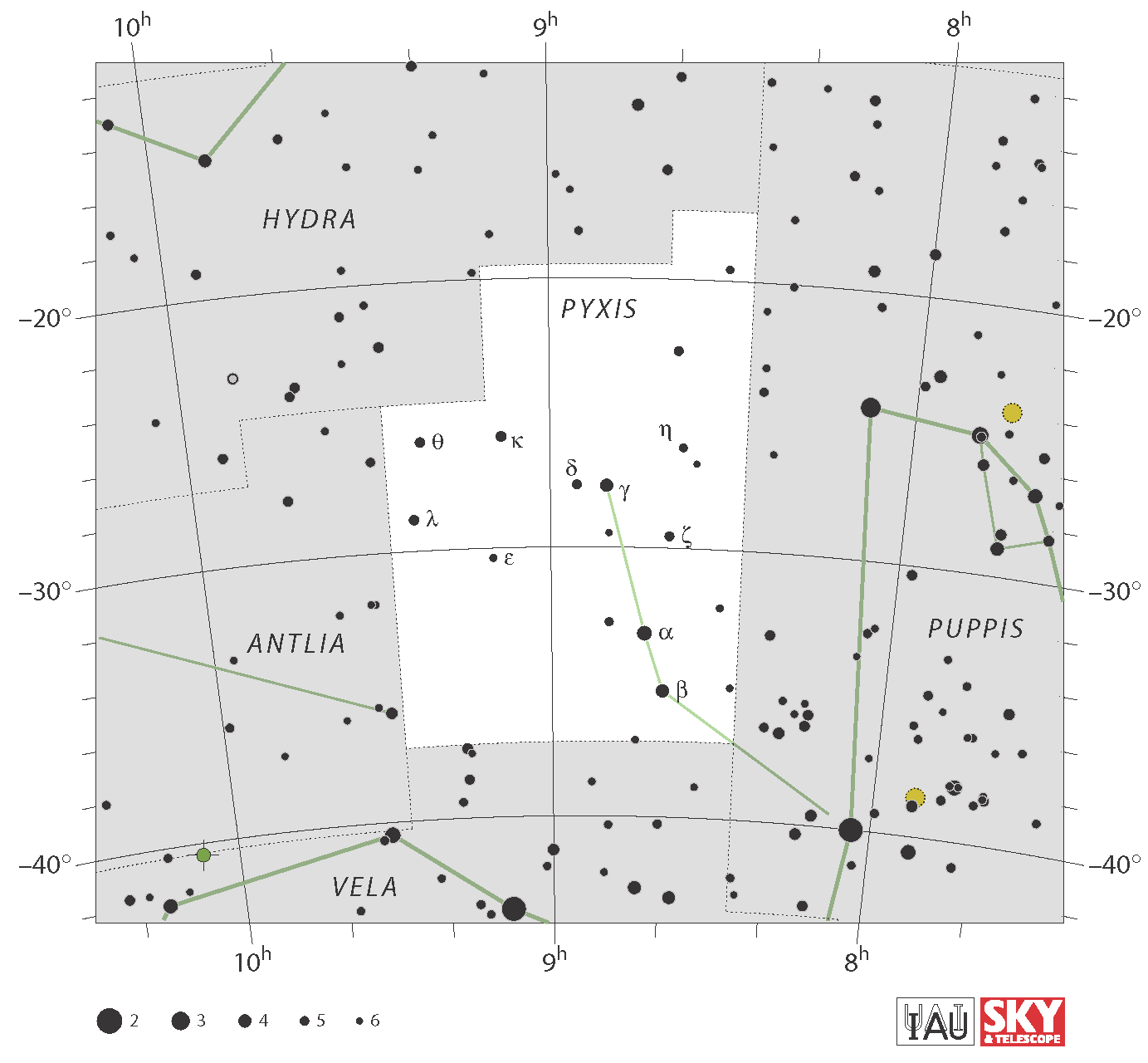Profile / Characteristics
| English translation | Latin declination and pronunciations | Size/ °² | # stars (visible) |
| the Mariner Compass | Pyxis – PIX-iss Pyxidis – PIX-ih-diss | 221 | 42 |
Main Star (brightest one):
| Designation | HIP number | name in IAU-CSN | brightness |
| α Pyx | HIP 42828 | – | 3.68 mag (V) |
Our (modern) Explanation
The stars of this constellation were known in antiquity and formed the mast of Argo Navis in its original Greek form without sails. After the extension of Argo by Dutch sailors in the 1590s, the body of the ship was considered larger, further south, and a sail was introduced, leaving the stars of Pyxis without any function. The French astronomer in the eighteenth century considered them as a separate constellation named The Mariner’s Compass (Pyxis).
Ancient Globes
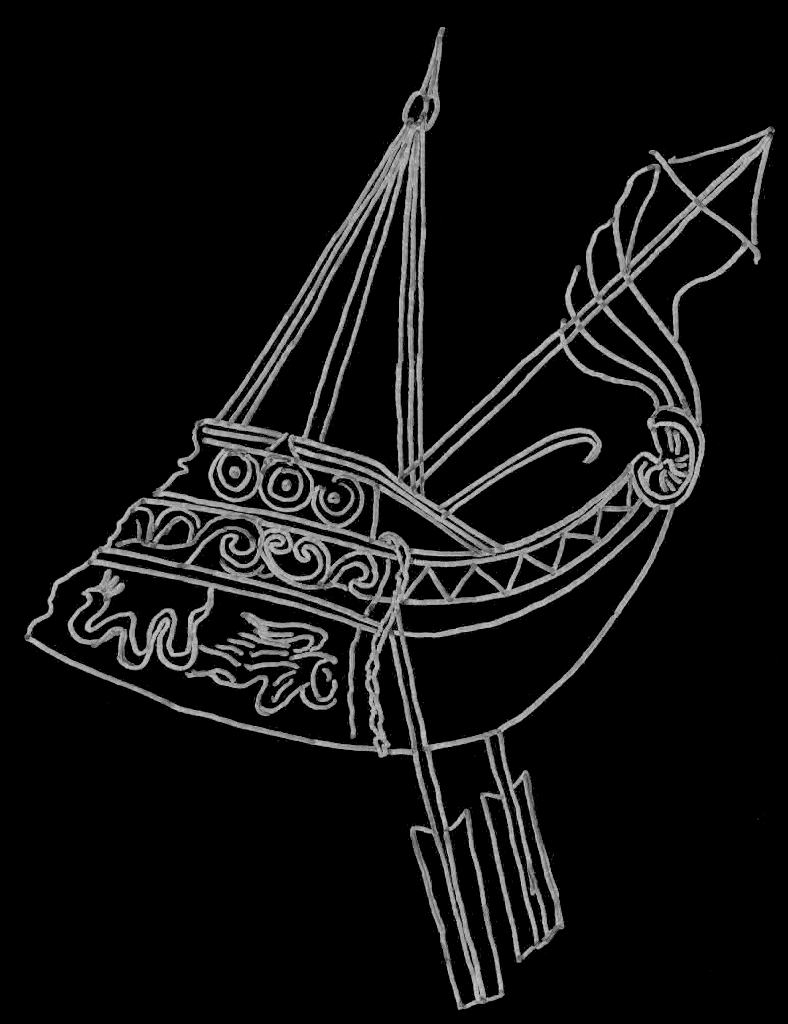
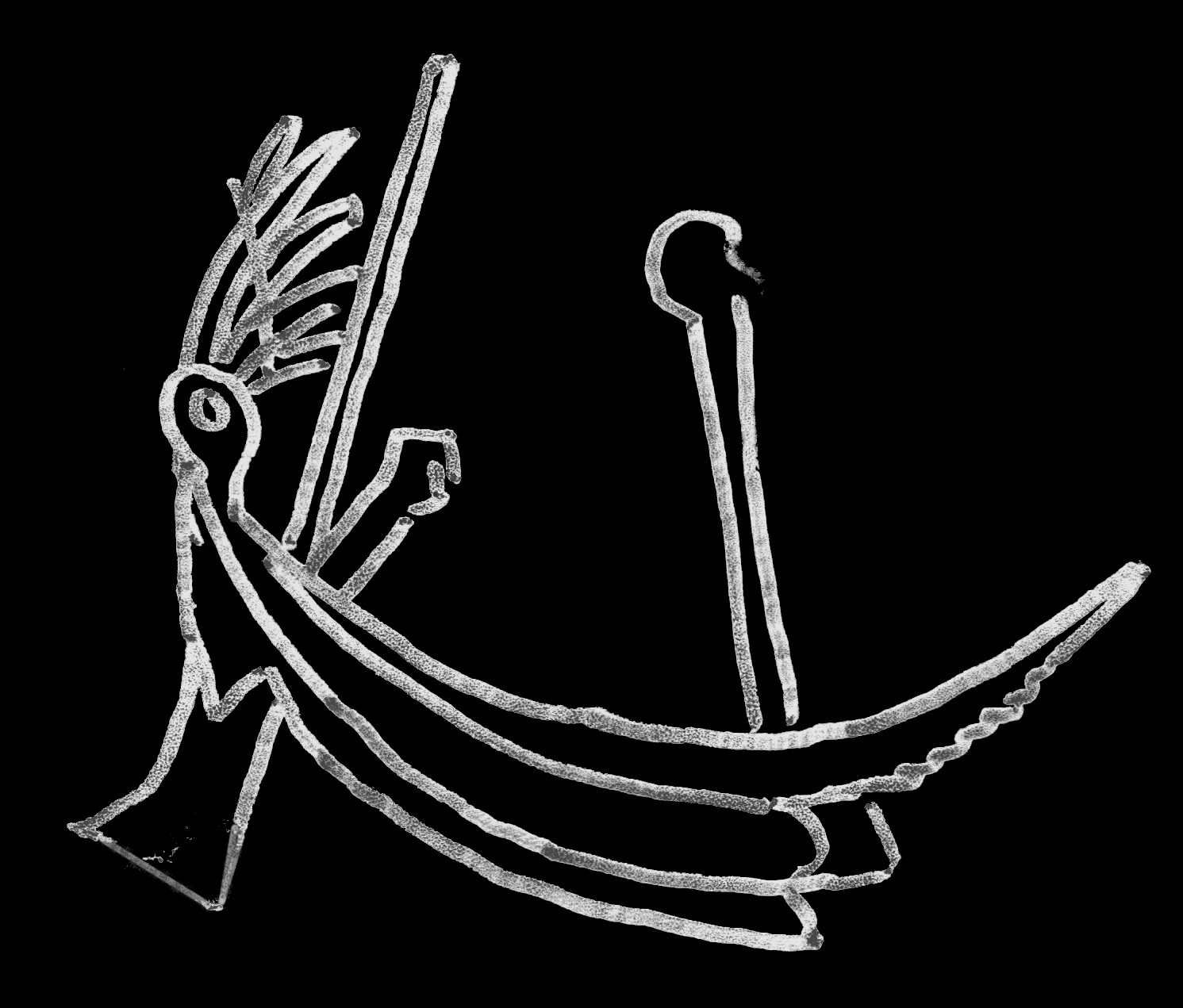
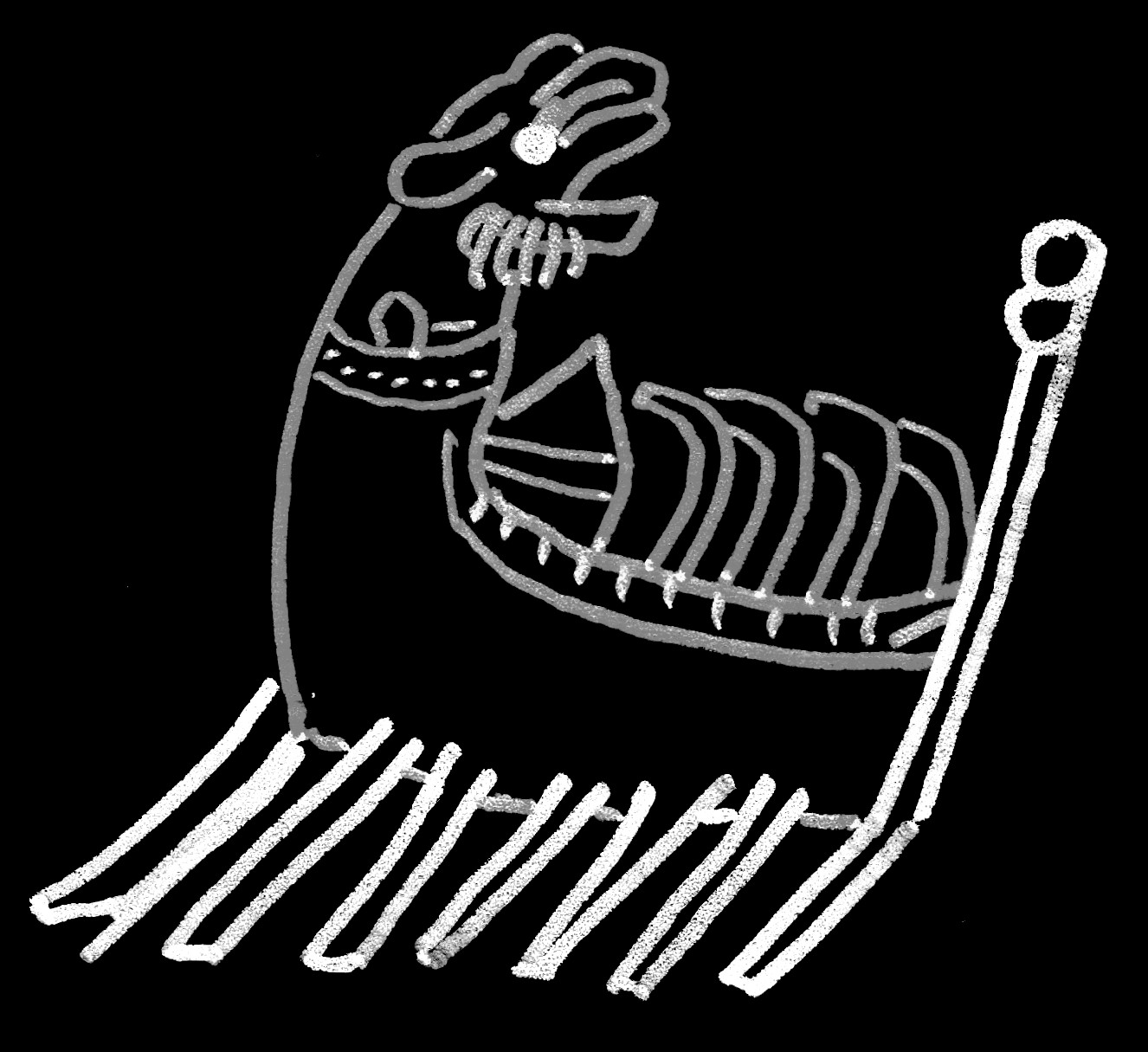
Farnese Globe
Kugel Globe
Mainz Globe
The three bright stars of Pyxis formed the mast of the ancient Argo.
The three bright stars of Pyxis formed the mast of the ancient Argo.
The three bright stars of Pyxis formed the mast of the ancient Argo.
Ancient Lore & Meaning
Aratus
Reference:
English translation by Douglas Kidd (1997).
Aratus: Phaenomena, Cambridge Classical Texts and Commentaries, Series Number 34
Pseudo-Eratosthenes
References:
French translation by:
Jordi Pàmias i Massana and Arnaud Zucker (2013). Ératosthènes de Cyrène – Catastérismes, Les Belles Lettres, Paris
English version in:
Robin Hard (2015): Eratosthenes and Hyginus Constellation Myths with Aratus’s Phaenomena, Oxford World’s Classics
Modern and Mediaeval Depiction

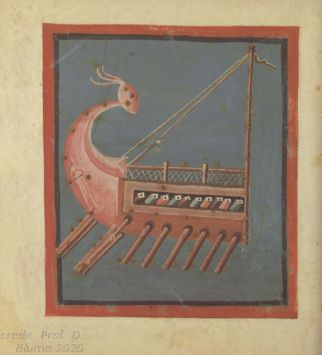
Depiction in Stellarium (by Fabien Chéreau, since 2000 CE)
depiction in the Leiden Aratea (9th century CE)
Early Modern Interpretation
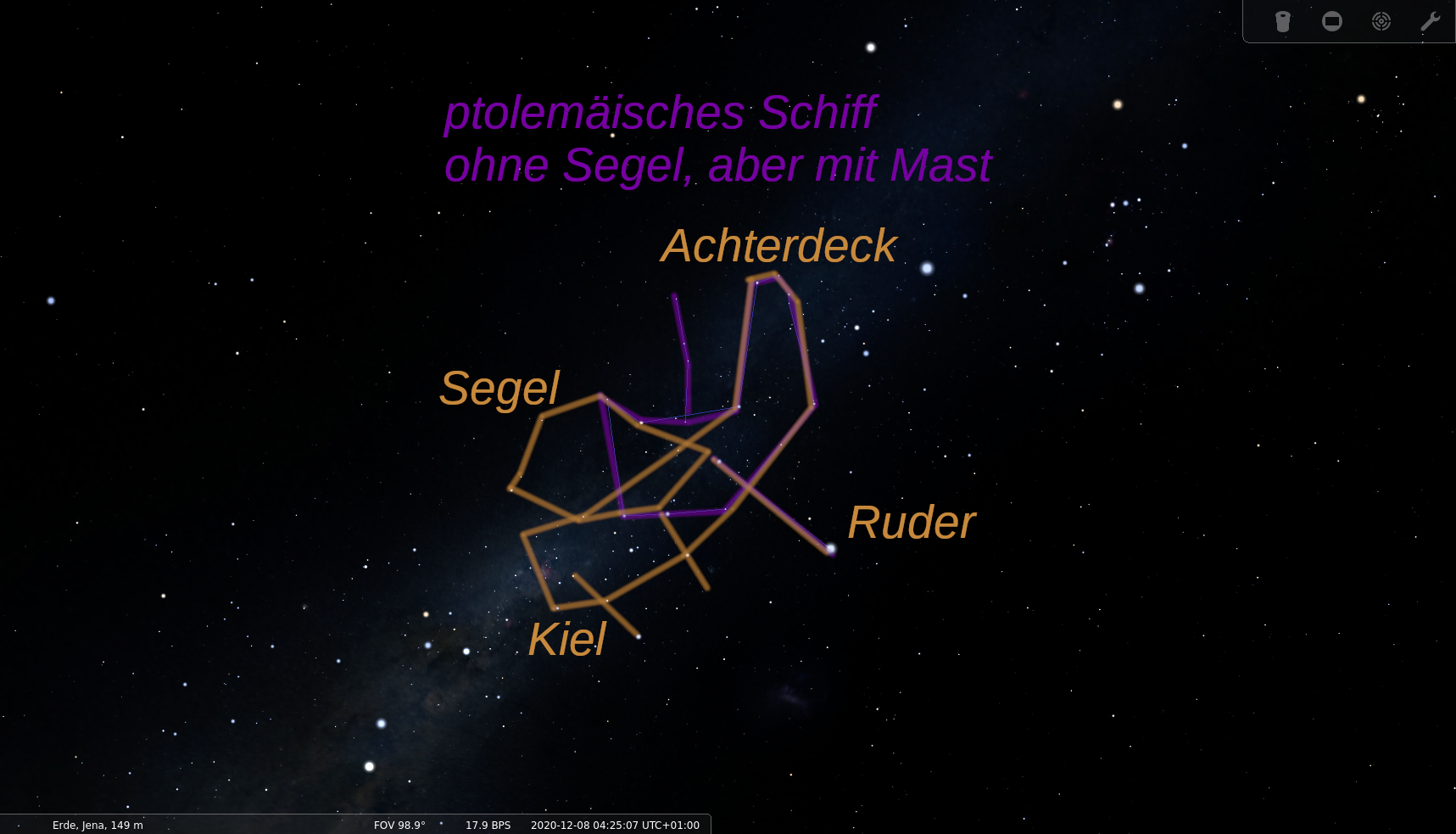
For modern versions of ancient lore:
Ian Ridpath’s page on this constellation
Commentary
invented by Lacaille 1756
Contemporary
As one of their first tasks in the 1920s, the newly founded International Astronomical Union (IAU) established constellation standards. The Belgian astronomer Eugène Delporte was assigned to the task to define borders of constellations parallel to lines of declination and right ascension. They were accepted by the General Assembly in 1928. The standardized names and abbreviations had already been accepted in 1922 and 1925.
